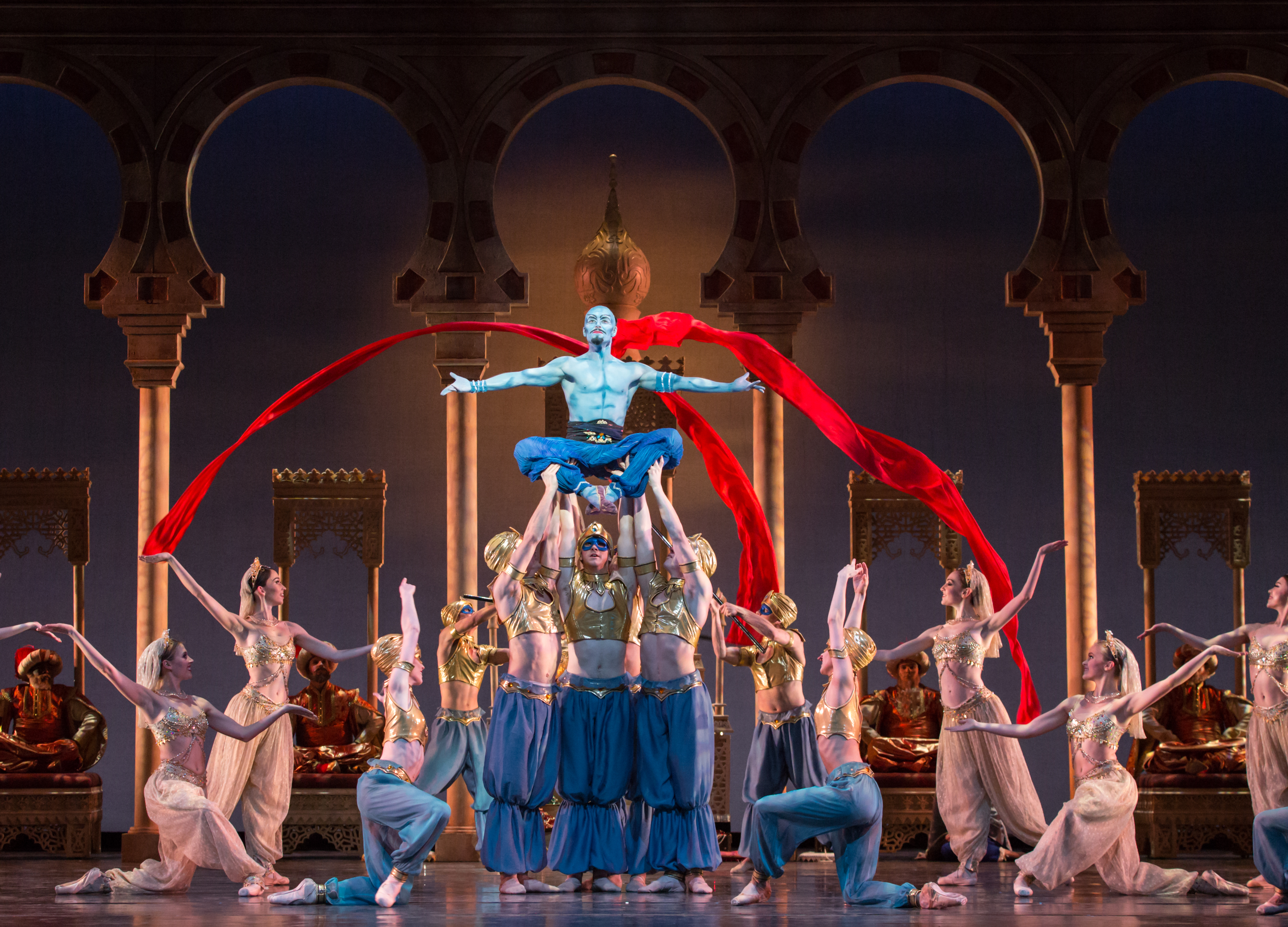Guest Post by Jacob Gucker
My wife and I attended the Houston Ballet’s performance of Aladdin a few years ago. It was my first ballet and a great experience. I found the costume design enchanting, the music salubrious, and the choreography mesmerizing. Even though we were way up in the first balcony, we enjoyed a true feast for the senses. Aladdin is a classic tale, but many people are more familiar with the Disney version than the original story from The Arabian Nights. In the ballet, Aladdin marries the princess at the end of Act II and they share a wedding dance that ends with the two dancers in a pose that tastefully resembles a coital embrace. In act III the evil magician deceives the princess and spirits her away to become a slave in his harem. When the man, the Adam, pursues his wife to the uttermost, infiltrating the magician’s palace, they share the same dance, ending with the same pose before going on to face the deceiver together. It was sublime!
My favorite scene occurs in the first act when Aladdin first arrives in the cave of wonders. The audience sees that the floor is covered in gold coins by way of the set design and lighting, but Aladdin’s survey of the cave is not complete until he beholds the precious gemstones which fill the cave. Dancers represent the gemstones.
A parade of precious stones dazzles Aladdin, who simply sits to watch. Time slows down as first a group of onyx and pearl dances, giving way to a routine by the silver and the gold, leading into a sapphire solo, moving into a passionate couple’s dance for a hot pair of rubies, after which the emeralds have their go, and finally, the diamonds. My favorite was the dance of the diamonds. They were dressed in silver, white, and black. They wore tutus, and I now understand why ballerinas wear them. The effect of their shiny tutus waggling as they pranced about en pointe was wonderful to behold and, furthermore, totally convincing. I was really, truly, seeing diamonds.
But what if I refused to accept this way of conveying a cave full of gems? What if I rejected the art form? What if I rejected ballet as the best way to tell the story unfolding before me? What if, after the show, I walked up to the director and said, “I think that your dancers represented the gemstones poorly; you should have used props?” Or, what if someone asked me what the scene in the cave was about and I said, “It was about people dancing in colorful costumes?” What if I stood before an assembled body of ballet aficionados and complained that the passage of time in the cave seemed unrealistic. “There’s no way it would take Aladdin that long to survey the gemstones. Each set of dancers danced for seven whole minutes!” That would be utter foolishness. They would laugh at me and shake their heads for seeing it so woodenly and I would walk away, disappointed in the artist.
Some people read the Bible this way, especially Genesis and Revelation. Genesis and Revelation are history, but not as modern people would tell it. Scripture is literature; scripture is the finest art. I heard a preacher once who proclaimed that there is a physical city of gold and jewels, the exact dimensions of the one mentioned in Revelation 21, presently traveling through outer space. This city will descend upon the earth at the end of time. I laughed inside. His view is what many people would call a “literal view of scripture.” Not so. A literal view of scripture is one that considers its genre and historical context and pattern of symbolism.
Scripture tells us early on that gemstones symbolize God’s people. The gemstones on the breastplate of the high priest of Israel symbolize the tribes of Israel. Paul applies this symbolism to the church in 1 Corinthians 3, saying that the church is God’s temple. The gold and precious stones of that temple are people. Ballet uses people to symbolize gemstones, but the Bible uses gemstones to symbolize people. The city that comes down like a bride prepared for her husband is tribes and peoples and nations. This may be a disappointment with the Artist to those who were looking forward to actual streets of gold, but this is God’s art and He wouldn’t have it any other way.














